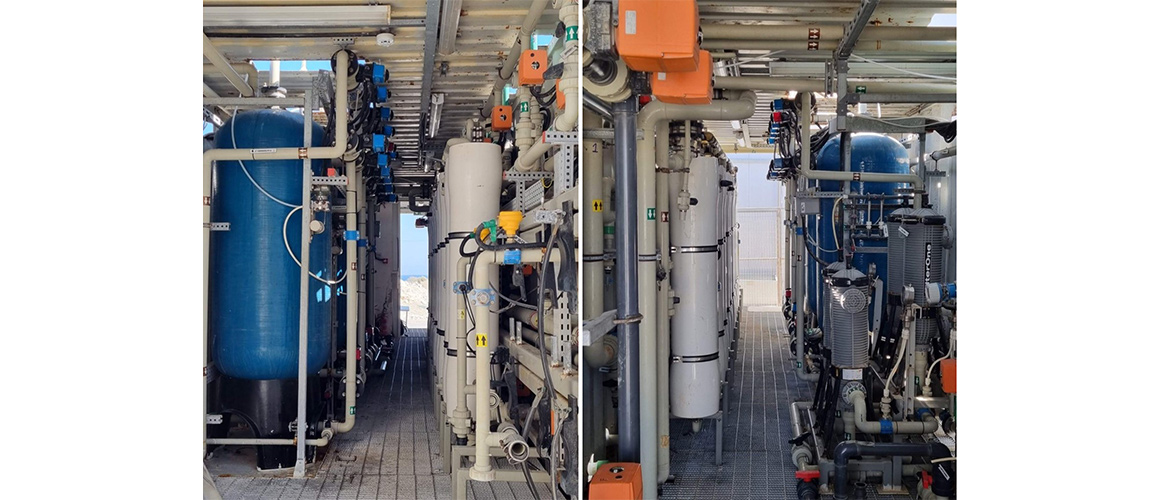
Climate projections for the Mediterranean region predict an increase in both minimum and maximum annual mean temperatures, as well as a decrease in precipitation on the order of 20%. Considering that currently 300 million people live in the EMME (Eastern Med and Middle East) region and expected to double by 2050, severe stress is put on the available freshwater resources already, projected to exacerbate soon.
Desalination is an inherently an energy intensive process. The minimum energy required for desalination can be estimated theoretically from the thermodynamic work for separation and is 1.12 kWh/m3, assuming an infinitesimal production of fresh water from a 4.5% saline solution. In real processes however, energy requirements in the order of 3-3.5 kWh/m3 (in the form of electricity) for reverse osmosis (RO) and 18-30 kWh/m3 (in the form of thermal energy and electricity) for multi-effect distillation (MED) have been reported, making desalination based on fossil fuels neither sustainable nor economically feasible in the long term.
The ARES group aims at researching novel ways of combining solar energy and desalination, with the following objectives
The group has two custom-designed novel 4-effect MED units, one operating in a laboratory setting and the other fully integrated with a solar-thermal plant at the PROTEAS laboratory.
The Group also works with external partners to integrate a novel, Forward Osmosis (FO) system at PROTEAS. FO systems offer superior yields per until of energy in, are particularly well suited to thermal inputs in the range of temperatures that are readily supplied by the CSP system at PROTEAS, and are seen as the next generation of desalination technologies for semi-arid and arid climates.